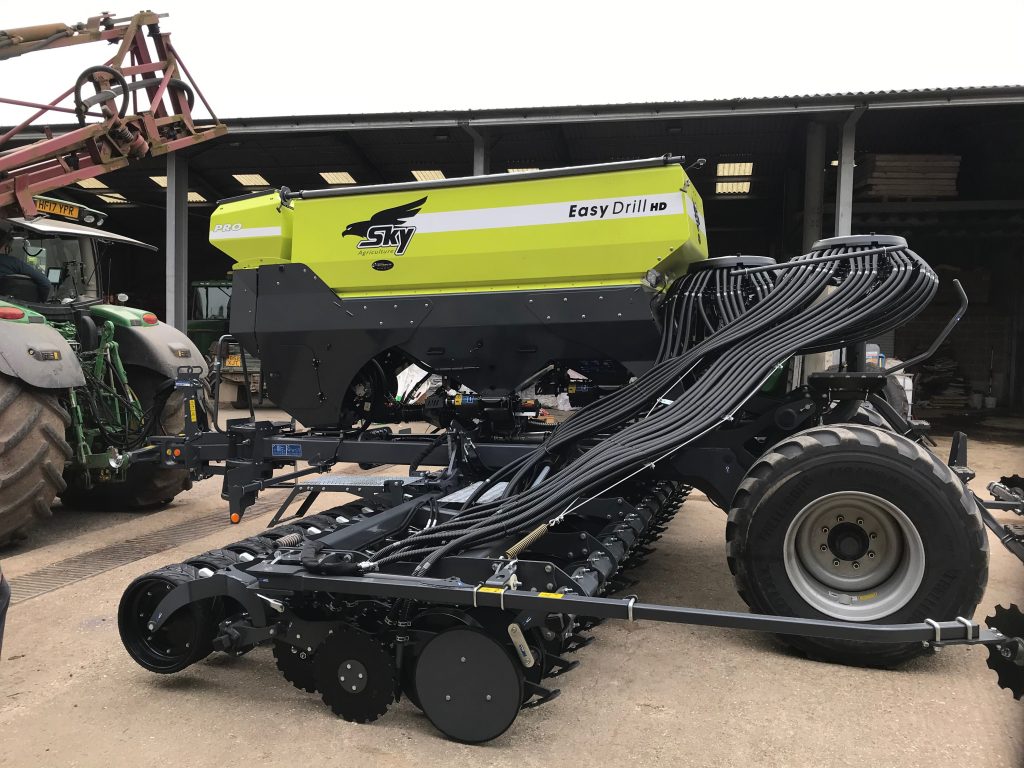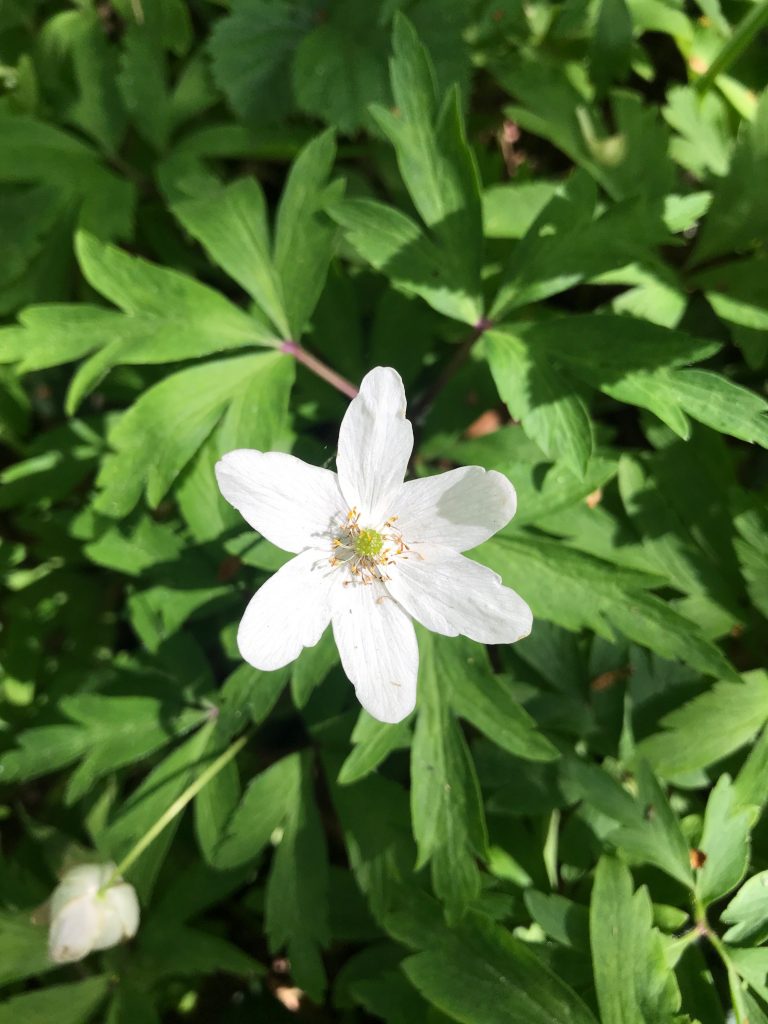View from the Hill 14th April 2021

All of our outdoor cattle are munching their way through the last of the winter’s turnips, we want them to get a move on so we can sow the remainder of our spring cropping. We would also like them to stay there until the grass starts growing elsewhere, so it’s a bit of a conundrum. The remaining turnips have started growing again, with the lengthening days, which helps provide a bit more grub. However the weather is not helping the grass or anything else to grow very much, soil temperatures are still very low for the time of year, and we are short of moisture, though having said that we will most likely be drowning by the time you read this.


The beans and barley have all germinated well, and are making steady progress in spite of the cold and dry. The tell-tale notching is the old adversary the pea and bean weevil, if the adults have created notches on the leaves, there are sure to be larvae munching on the roots too. Having foresworn insecticides more than 2 years ago, we have to trust in natural predators, and hold out hope that the little beggars get bored before they do too much damage. Dry weather at this early stage of the season forces the roots of all crops to go deeper in search of moisture, which is a good thing to help stave off drought stress later in the season. The tricky thing is to judge the right timing for fertiliser applications. (For the cereal crops anyway, the beans, being legumes, will make their own nitrogen). If we have a dry season it will be better to apply the fertiliser early so it has a better chance of being washed down to the roots, but if it turns out to be a wet one and pours with rain straight after application, there could be a period of fast lush growth, which brings a risk of the crop lodging (leaning or falling over). Please pass the crystal ball.
Our sheep scanner Glyn Davies arrived in the last week of March, all the way from Essex, although you could be forgiven for thinking he may have come from Wales with a name like that. He had chosen the one wet day we have had in almost a month, but that didn’t stop him, tucked into his waterproof tent, everyone else got wet. Glyn only has to extend his gloved arm underneath the ewe, where he runs the scanner over the skin between the udder and the woolly belly. He is able to see how many lambs each ewe is carrying, with remarkable accuracy we are assured. This is the first time for several years that we have employed a scanner, this year we are so short of fodder, we have too many mouths to feed, so we need to identify the empty ewes and whisk them off to market. Sheep have also been making good money lately, so it makes sense to shift them on now rather than continue to feed them with no lambs to benefit from.


We actually found that the ewes are carrying more lambs than usual, and the number of triplets could almost be a problem. As we lamb outside there is very little opportunity to even up litter sizes, by taking a triplet lamb and ‘twinning it on’ to a ewe with a single, so most triplet lambs will have to fight for milk at the ewe’s rather inadequate two teats. Twins is obviously best.

Our new Sky direct drill finally arrived on March 31st, and we immediately put it to work sowing the first field of poppies. They have yet to emerge, unsurprising as it has been so cold and dry. We are planning to put some of the machine’s special features to the test very soon, by sowing a few plots of mixed species. The idea is to try out the theory that different species growing together both benefit from the synergistic effect of their different rooting characteristics, due to the different range of soil organisms supported by each plant species’ roots.
The drill can sow up to 4 different types of seed at the same time, through two different sets of pipes, to outlets at two possible positions. For example small seeds can be into the surface, and larger seeds deeper into the soil.

As spring approaches, wild flowers are starting to pop up all over the place, and the rusty memory is put to the test trying to remember their names. Bluebells, celandine and cowslips are easy, but who can be sure if the little white jobs are wood anemones or a stitchwort? Well help is at hand, in the form of an app for your phone of course. This one costs £20 per year, but I think it’s worth every penny. Within a few clicks you can take a picture and identify most green plants, including trees and shrubs, by their flowers or even just their leaves or seed heads. It’s called Picture this.
If anyone knows of similar apps to help identify birds and butterflies, then please let me know, I have a bird one called Chirp, and a butterfly one called Sunbird Butterfly ID, which I haven’t put properly to the test yet, but they will need to be very good to match the plant one.


Lambing is fast approaching, we expect our ewes to start lambing in the first week of May, not long after we intend shearing them. We will be hoping the weather has bucked up a bit by then, otherwise they will get a bit chilly. Many farmers have been lambing over the last 6 weeks or so, and most will be turning their ewes and lambs out onto fresh pastures which have been rested over winter. This is by way of a polite reminder to please take great care around sheep when you are walking in the countryside, especially with dog companions. Sheep will spook and take flight at the slightest provocation, and the sight of sheep on the move is always a terrible temptation for even the most well behaved dogs. Please keep dogs on leads, and particularly when following paths across pastures please remove dog poo, because it can carry a deadly disease caused by a parasite called Neospora. It can make dogs ill, and can even cause death in puppies. It is also the most common cause of abortion in cows. Some wormers can control neosporosis in dogs, but picking up is a very good way to avoid the problem.
In addition to this, Natural England has this month released a long awaited refresh of the Countryside Code:










Are you expecting us to have a late breakfast or a very early one?
Good luck with the spring drilling that has yet to emerge or to be drilled, perhaps we are turning into a Northern Australia climate where they only have 2 seasons; the Wet and the Dry?
No grass in East Anglia either, you are not alone.
Hi George. The new drill sounds fancy. Does it have separate seed boxes or does it select the seed by size. Love to all down on the farm. Ali in NZ
Hi Ali, It has 4 seed boxes, 2 large and 2 small.
Great video
Dear George,
Yet another set of words and images to share with “them that only see farms from a distance “. The number of pests and vagaries of the weather that you are juggling with really do open up the lie of the rural idyll. Frosted fingers crossed 🤞 that Sky comes up with the results and the other sky lets down some moisture!
Bonne Chance with the triplets and thanks again,
Rogxxxxx
A herd of Zebra may yet be the answer in droughted Sussex, as it looks like the second year of dry weather and no forage…selling a third of our cattle this week to alleviate crisis!
Thanks George for another great video and informed commentary , the sky drill is looking really interesting I am happy not to be the operator, an MF 30 was enough for me!!!.good luck with the no. of triplets , school children love bottle feeding? perhaps Knighton could help? are wheat crops showing any disease symptoms such as septoria, some here are looking quite unhealthy?